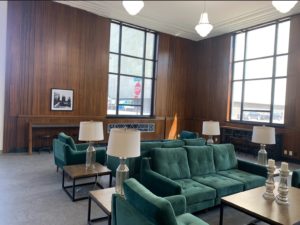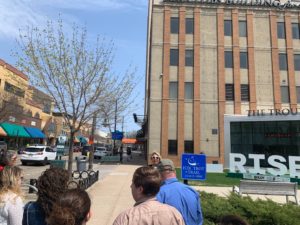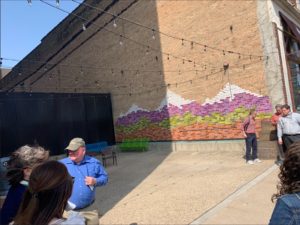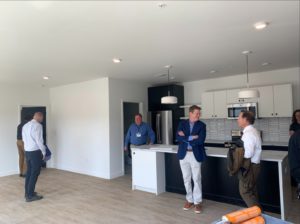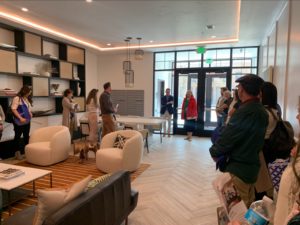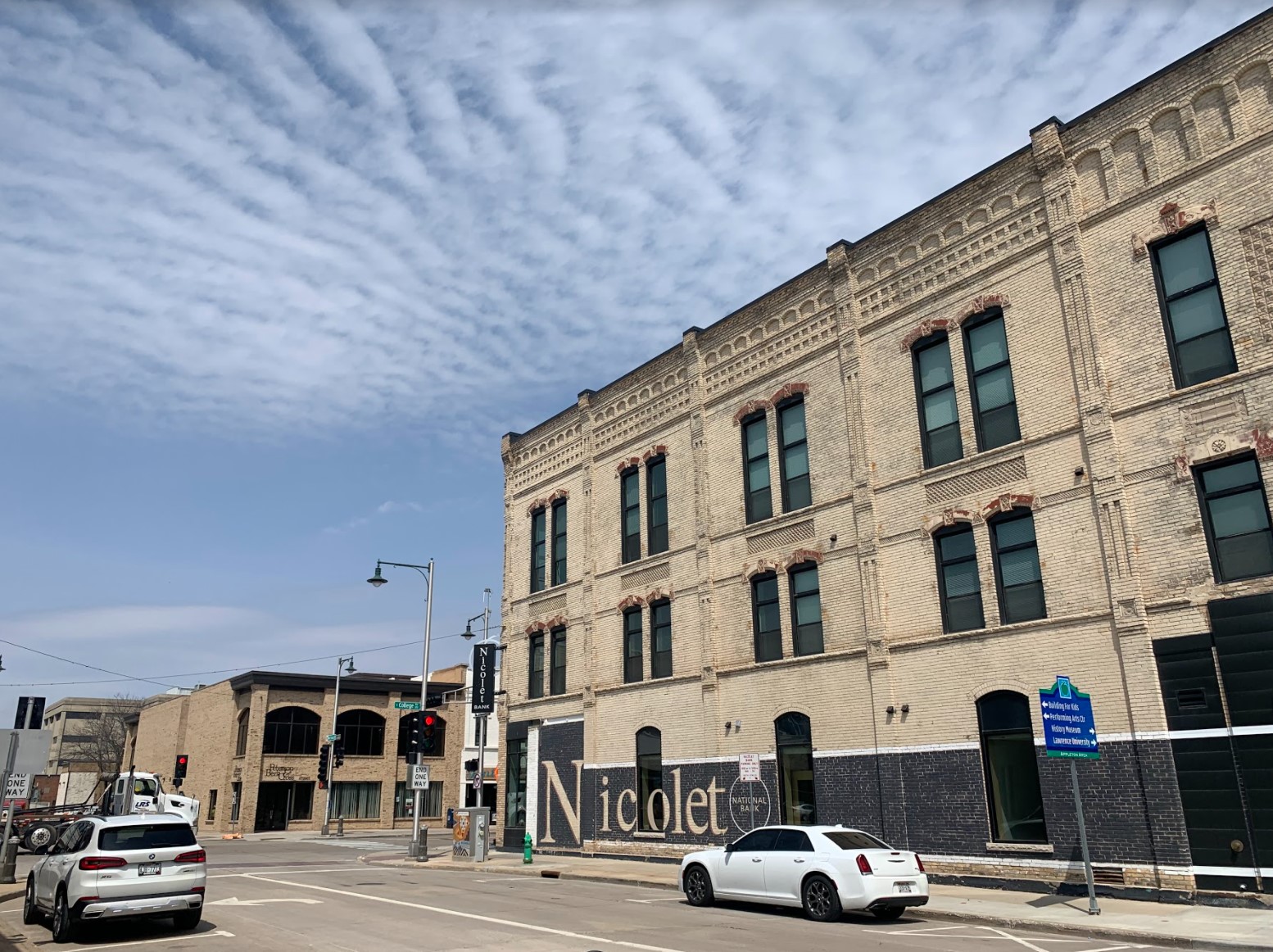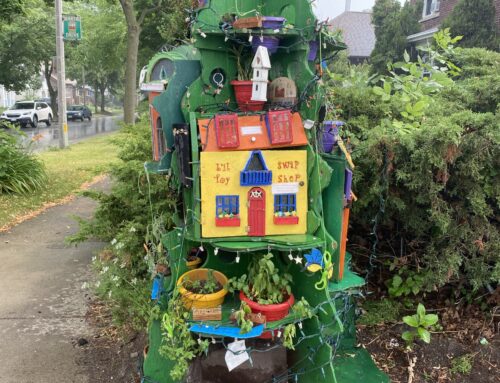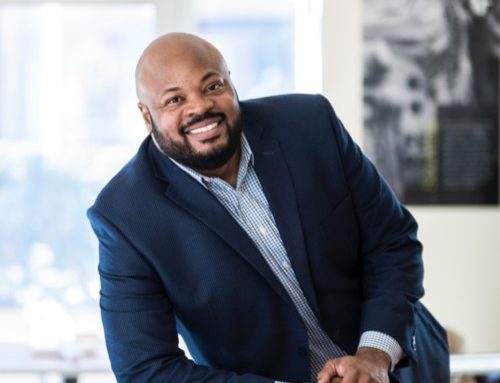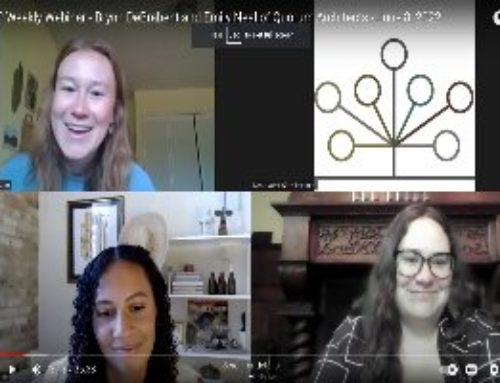By: Anne Marie Gunn
The 2022 Wisconsin Downtown Action Council conference was held in Appleton, WI and was sponsored by AARP. People from the downtowns of Wisconsin gathered to share ideas and projects and to learn from each other about the various ways we can improve the cities we live in.
On the first day, we were welcomed by Katherine Westaby, the Board President of Wisconsin Downtown Action Council. A lunch was held that day, followed by a panel that talked about the importance of planning both large and small scale, ambitious projects. Those that sat on the panel were Karen Harkness, Director of Community & Economic Development for the City of Appleton; Pam Seidl, Executive Directory of Fox Cities Convention & Visitors Bureau; and Kristen Fish, Principal & CEO of Redevelopment Resources. They each discussed projects implemented in their own cities, such as horizontal commercial signage (so pedestrians are able to see what businesses are there from the sidewalk), and branded wayfinding so that visitors can get their way around their area’s attractions easily. Furthermore, the panel had a focus on how visitors could be turned into residents, with the intentions of also bettering residential experiences of living in their cities.
Post panel discussion, the conference held two different tours. The first tour consisted of the riverfront areas, while the second, that I participated in, included art and residential development projects. Here, we saw various sculptures in which they rotated being on display, poetry on the sidewalks, signages for different attractions in the neighborhood, and a look inside three apartment buildings that have all been completed in the past three years. Personally, I was fond of the last building we toured. Northpoint Redevelopment focuses on redeveloping historic buildings into affordable and mixed-use apartment buildings. The building that we toured was an art deco building that used to sell newspapers in Appleton. Each room was a unique size and feel, along with the occasional exposed brick walls. We left satisfied as the first day came to an end sitting in Gibson Music Hall. We enjoyed each other’s company, good music, and a delicious dinner provided by The Cozzy Corner, a Southern-style barbecue/soul food restaurant located in Appleton.
On day two, Gil Penalosa, Founder and Chair of 880 Cities, was the keynote speaker. With over 400 slides in his presentation, Gil covered a plethora of topics at a quick pace. He expressed that his organization was focused on making cities all over the world focused on the well-being of those that live there. The idea was that if cities are able to ensure a safe and enjoyable living experience for both young children and senior citizens, then it would translate to an enjoyable and safe city for people of all ages.
The majority of his presentation focused on making streets safer because streets are 25-30% of the public/shared space in cities. Making bike paths, expanding sidewalks, developing more parks and green spaces, are some of the ways Gil encouraged us to think about changing the way our city streets look.
Gil addressed how COVID-19 and the pandemic, as a whole, revealed how we need to change the way we are operating. The shift towards initiatives focused on health, equity, and sustainability, was accelerated by people staying home during lockdown and needing outdoor space to exercise in new ways. City developers and community leaders have had a real impact on the way our cities look, and how people move around in our cities. Gil talked about having both the hardware (parks, infrastructure for safer pedestrian walkways, infrastructure for biking, etc), and the software (programming, events, community groups, etc), to make these kinds of changes a reality.
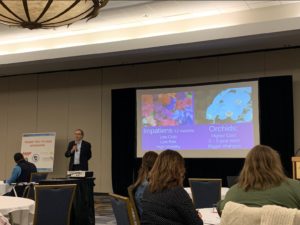
In the photos above, Gil addressed the need for various kinds of projects; short-term, low cost projects and long-term, higher cost projects. He called these Impatiens and Orchids, and had us go around the room providing examples of Impatiens and Orchids for placemaking and mobility projects. From art installations to bike paths to road reconstruction, to signage, the room was buzzing with excitement over all the ideas for our cities.
After Gil spoke, there were also two breakout sessions with various topics. For the first breakout session I chose to go to “Heart and Soul” with Nora Roughen-Schmidt. I learned that Heart and Soul is a community focused event that has been implemented in cities all over the country. Near West Side Partners held a similar event in the summer of 2021 with Harley Davidson called an Appreciative Inquiry Summit. Both models center on rediscovering what communities and neighborhoods have that are unique and positive for coming up with new projects going forward, expanding on these qualities. Nora shared that Heart and Soul focuses on what matters most to the community (what do they care about?), involving everyone (including scheduling multiple feedback sessions so people with different schedules can participate), and playing the long game (implementing projects from the event does not happen overnight).
For the second breakout session, I chose to attend “Vacancy to Vibrancy” with Bob Duffy, the Economic Development Director for the City of Oconomowoc. He presented the ways Oconomowoc has developed their downtown and had some recommendations for us in our own areas. In general, he advised establishing a strategic plan, removing zoning barriers for businesses, doing a market analysis, utilizing private and public funding, and having partner organizations. Below are some examples of the projects they implemented in Oconomowoc:
- Roundabout reconstruction at a busy intersection
- Raised pedestrian crossings for safer walk-ways
- Facade improvement grant programs
- Alley enhancement – community challenge grant with AARP
- Historic walking tour
- Public art tour
- Working with utility department for winter lights along corridors
- Leveraging historical nuggets for events and programming (Oconomowoc is where Wizard of Oz first played)
Towards the end of the conference, there was an arts panel that discussed art initiatives and how they focus on the following ideas:
- Economic growth and sustainability
- Attachment and cultural identity
- Artists as contributors
- Social cohesion and cultural understanding
- Public health and belonging
One of my favorite art initiatives was shared by Amy Hansen, the Executive Director of Downtown Fond Du Lac Partnership. This initiative was a painted picnic table project where local artists painted picnic tables to be enjoyed on the sidewalks of Fond Du Lac, to encourage outdoor seating and mingling.
Overall, I was pleased to find out that plenty of the ideas already accumulated in the Near West Side were reflected by projects in other cities. I left the conference feeling rejuvenated with plentiful ideas in regards to the Near West Side of Milwaukee.
